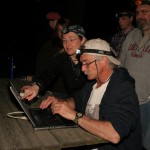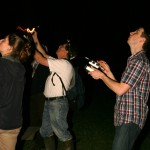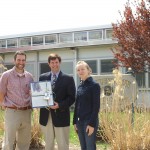Our Bat Project Begins to Take Flight
Musings from Austin, TX as our own project gets underway in New Jersey.
By Brian Henderson, GIS Specialist
In April I attended the Anabat Techniques Workshop in Illinois with MacKenzie Hall. The following month I took a brief trip to Austin, TX.
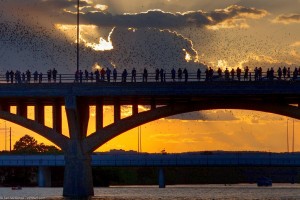
The trip wasn’t work related, and was planned before I knew I would be helping with our bat monitoring work in New Jersey. But it was appropriate because Austin happens to be home to the largest urban bat colony in North America.
Located near the center of the city, the Congress Avenue Bridge spans Lady Bird Lake, a reservoir on the Colorado River. Renovations made in 1980 created ideal roosting habitat along the bottom of the bridge and it wasn’t long before migrating bats discovered it. Now, estimates are that 1-1.5 million Mexican free-tailed bats roost below the bridge between March and November. Each night around dusk the bats exit the bridge to forage for insects along the river. When conditions are right the effect is dramatic: a column of bats silhouetted against the setting sun that can last for 45 minutes as the bats exit the bridge. Although there were petitions to eradicate the bats when they first took up residence, the city has come to embrace them and it isn’t unusual for several hundred people to line up along the bridge on summer nights to watch the bats exit and begin foraging.
Unfortunately, it was cloudy and slightly cool on the evening I visited the bridge and the bats waited until nearly dark before starting to emerge. It was difficult to observe the bats except in the illumination of the streetlights lining the bridge or when they veered closer to the shore. Although it wasn’t the spectacle I’d been hoping for, it was still impressive. Even under less than ideal conditions I saw hundreds (possibly thousands) of bats-more than I observed in the week of training in Illinois, and probably more than in the rest of my life combined.
Here in New Jersey we don’t have Mexican free-tailed bat and we certainly don’t have any bat populations that rival the numbers of the Congress Avenue Bridge Colony. Even before the arrival of white-nose syndrome populations at our largest hibernacula numbered in the tens of thousands, not millions. So it was exciting and encouraging to see such a thriving bat population in person. It was also impressive to see how the city has embraced the colony as a beneficial, unique and interesting attraction. Similarly, the response to our acoustic monitoring project in New Jersey has been overwhelmingly positive. Landowners and the general public all seem interested in learning about bats, concerned about white-nose syndrome, and are eager to help however they can.
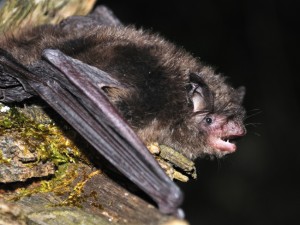
My experience in Austin was also a reminder that even at the best locations, there are variables that affect what you observe on any single night. Rain or cool weather reduce bat activity, and there’s still a lot we don’t know about bat foraging behavior; for instance they may actively forage in an area one night but not the next. So negative results during one visit isn’t enough evidence to decide bats aren’t in the area. Ideally we would visit each site multiple times to control for this variability. However with fifteen sites to monitor, only a few staff members and a fairly short survey period (roughly June 1st to July 31st) we know getting to each site once will keep us busy. As a result, we may have to survey some sites even though the conditions aren’t ideal. Unfortunately, these are common problems when surveying for endangered species and are something that many at CWF have had to deal with.
Our acoustic bat monitoring project is just getting underway; we’re taking the lessons learned in Illinois and using that knowledge to monitor for bats in New Jersey. Expect more updates on our techniques and preliminary results as we have a chance to visit more sites.

